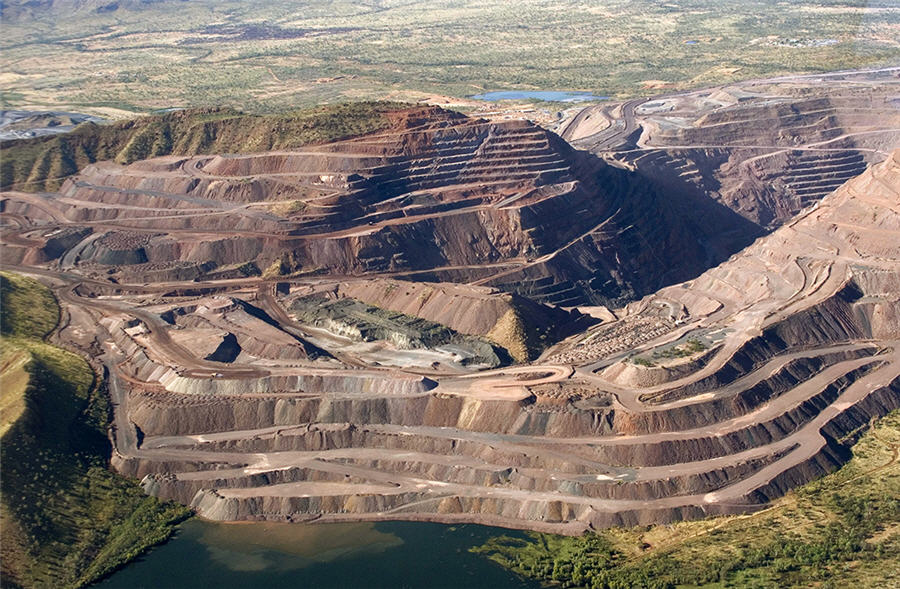Global S&T Development Trend Analysis Platform of Resources and Environment
| Diamond sector battles crisis fatigue | |
| admin | |
| 2019-11-22 | |
| 发布年 | 2019 |
| 语种 | 英语 |
| 国家 | 国际 |
| 领域 | 地球科学 |
| 正文(英文) |  Argyle diamond mine – Australia. Image by Rio Tinto.
They say it’s darkest before the dawn. Let’s hope that holds true for the diamond sector. We try to strike a hopeful note here at Diamonds in Canada about an industry that’s become such an inspiring and Canadian story about perseverance, determination, and the ability to adapt and change. But conditions have become very difficult of late. As Paul Zimnisky points out, we are currently in the third crisis the industry has seen in 15 years. Recent figures from diamond powerhouse De Beers are illustrative. In the first half of 2019, De Beers’ revenue decreased by 17% to $2.6 billion (compared to $3.2 billion in last year’s first half). Its rough diamond sales fell by 21% to $2.3 billion (compared to $2.9 billion last year). Looking at its August sale alone paints an even starker picture, with revenue declining 44% to $280 million. In response to the tough environment and thin margins in the mid-stream of the diamond business, De Beers has been unusually flexible with its customers, letting its sightholders defer purchases and lower their annual purchase quotas for the year.
Junior producers, who obviously can’t be as flexible, are struggling – or worse. Stornoway Diamond, which opened its Renard mine in 2016 with so much promise, has been bought out by its creditors. While Mountain Province Diamond, the 49% owner of the Gahcho Kué mine in the Northwest Territories, is doing much better financially than its peers, the company reported devastatingly low sales prices of $52.5 per carat in its third-quarter financials. Even Lucara Diamond, despite turning out one exceptional stone after another at its Karowe mine in Botswana, was trading at just above $1 at press time – half its share price 12 months ago and a quarter of where the stock was three years ago. It’s perhaps a sign of the times that a 10-year senior vice-president of global sightholder sales with De Beers, Richard Whitby, recently joined lab-grown diamond company Altr Created Diamonds as CEO. Yet there are reasons for hope. The closure of Rio Tinto’s Argyle mine in Australia is on the horizon, with the miner confirming the timing will be at the end of 2020. The mine has been a high-volume producer of smaller and lower-quality diamonds (more than 800 million carats of rough) since it opened in 1985. On the demand side, some miners affected by high fluorescence in their diamonds have begun efforts to reverse some of the discount the markets have been applying to these stones. Both Alrosa and junior Mountain Province have marketing plans in the works. And way back at the beginning of the diamond pipeline, exploration for diamonds has not ceased, despite the headwinds. Close to home, exploration activity by De Beers, RJK Explorations and Tres-Or Resources along the Ontario-Quebec border, near Cobalt, Ont. And Notre-Dame-du-Nord, Quebec, is building on new knowledge. A non-remote diamond discovery – and potentially mine – could be a game changer for our industry, and a balm to soothe its crisis fatigue. (This article originally appeared in the November 2019 issue of The Northern Miner’s Diamonds in Canada.) |
| URL | 查看原文 |
| 来源平台 | Minging.com |
| 文献类型 | 新闻 |
| 条目标识符 | http://119.78.100.173/C666/handle/2XK7JSWQ/219390 |
| 专题 | 地球科学 |
| 推荐引用方式 GB/T 7714 | admin. Diamond sector battles crisis fatigue. 2019. |
| 条目包含的文件 | 条目无相关文件。 | |||||
| 个性服务 |
| 推荐该条目 |
| 保存到收藏夹 |
| 查看访问统计 |
| 导出为Endnote文件 |
| 谷歌学术 |
| 谷歌学术中相似的文章 |
| [admin]的文章 |
| 百度学术 |
| 百度学术中相似的文章 |
| [admin]的文章 |
| 必应学术 |
| 必应学术中相似的文章 |
| [admin]的文章 |
| 相关权益政策 |
| 暂无数据 |
| 收藏/分享 |
除非特别说明,本系统中所有内容都受版权保护,并保留所有权利。
修改评论